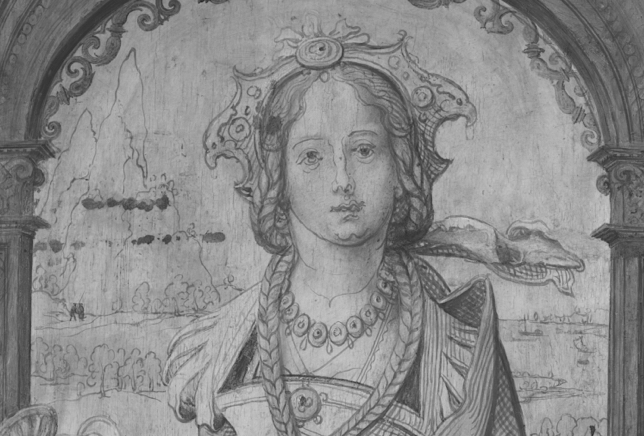The Osiris Camera is the original world leading specialist camera designed specifically for use in infrared reflectography. Created in collaboration with the National Gallery (London), the Osiris was the first infrared imaging system to provide high-resolution, high-speed images in a portable camera. It’s provided the springboard for us to go on and develop our Apollo camera, a new standard in infrared reflectography.
Whether studying underdrawing, researching the history and provenance of a painting, or documenting restoration works, the Osiris is a sensitive, high-resolution camera for infrared reflectography (IRR).
In 2023 we announced the discontinuation of the Osiris Camera due to future changes to the Windows operating system, drivers, and hardware becoming obsolete, making the camera harder to maintain. We have had some success with overcoming these issues, but can no longer guarantee or offer a level of service for the Osiris cameras we once could. Formal support for the Osiris and associated software will continue for the next 12 months, then the camera and the service will be obsolete.
Captured on Osiris Camera

The Magdalen NG719 By Kind Permission Of The National Gallery (London). IR Image Captured With The Osiris, Pre-Restoration.
Captured on Apollo Camera

The Magdalen NG719 by kind permission of the National Gallery (London). IR image captured with the Apollo, post-restoration.
Description
Specifications
Downloads
The Osiris camera is the original world leading specialist infrared reflectography camera. Created in collaboration with the National Gallery (London), the Osiris was the first infrared imaging system to provide high-resolution, high-speed images in a portable camera. It provided the springboard for us to develop our Apollo camera, a new standard in infrared reflectography.
Whether studying underdrawing, researching the history and provenance of a painting or documenting restoration works, the Osiris is a sensitive, high-resolution camera for infrared reflectography (IRR).
The Osiris features an internal mechanical scanning system to create high-quality, 16 megapixel images using a leading InGaAs line sensor. This is driven by a microcontroller at the heart of the camera to move the infrared sensor with precision and accuracy while it captures up to 64 individual reflectograms.
These are sent to a PC via USB connection where our dedicated software automatically assembles and stitches them into a full resolution reflectogram mosaic. Unlike other solutions, this level of automation requires no extra input from the user.
Zoom features within the software mean you can easily look at specific details and features, or you can use the selection tool to capture a set region of interest when investigating a painting.
The Camera
High resolution images (16 megapixel)
Object resolution down to 0.05mm (0.002 inches)
Single, finished image produced in minutes, without the need for further processing
User-selectable integration time
Selectable depth of field using lens aperture
Small enough to be carried in airline hand luggage
Standard lens; 200mm to infinity, while our optional Macro Lens accessory extends down to objects just 35mm in size
The Osiris comes packaged in a robust, wheeled flight case that is small enough to meet airline hand luggage restrictions. This makes it easy to transport the camera, whether it is to the next studio, or half way around the world.
The Software
Osiris’s control and automation software provides everything you need to acquire images in a single package. You can also use the Osiris Parameter Calculator to make setting up your equipment easier than ever. So long as you know the size of your painting, the Calculator makes it simple to find the optimum positioning and focus settings for the camera.
Automated stitching of 64 individual reflectograms
Automatic image calibration
Selectable integration time, from high quality to fast scan
Zoom features to study fine details
Fast focus mode to allow the best focus to be attained quickly
Black-level calibrations simply controlled by PC display
A selection of case studies from Opus camera users. See the mysteries that lie beneath and read the expert findings. [Case Studies Button]
View more case studiesHead over to the frequently asked questions section of the website to find out more.
FAQs
The Apollo camera has fomented new research in art history and English literature
Ashmolean Museum, Oxford University
